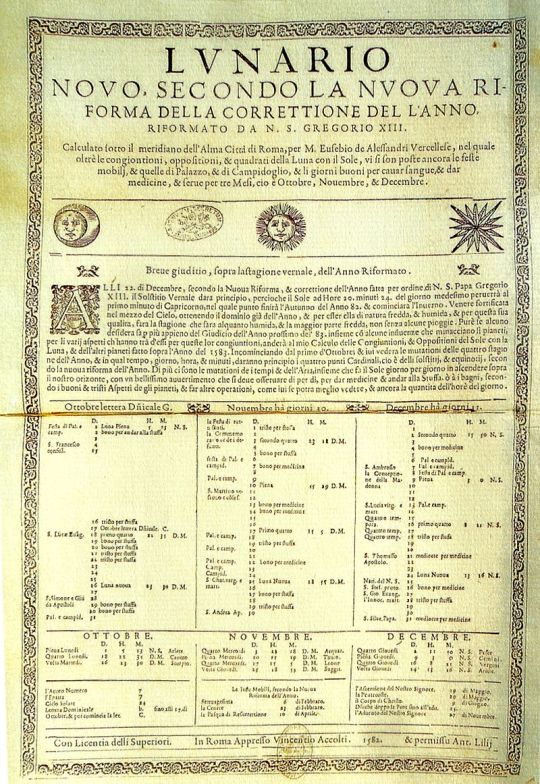#january of the calender council
Explore tagged Tumblr posts
Text

January, Under The Mask
#ough i love her#slowly but surely gettin there with drawing again XD so.... her <3#BUT I AM NOT attempting to draw that mask rn ajdkfkgkgkj#my art#fallen london#january of the calender council
46 notes
·
View notes
Text

"Is Arestes e S'urtzu Pretistu" Sorgono, Sardinia
Is Arestes and S’Urtzu Pretistu of Sorgono
Man has always paid his attention to the events that Mother Nature decreed and decrees with cyclical rhythms that can be defined as eternal, and to which he has tied his fears but also his hopes making it a religion towards a god to whom he turned: Dionisio Mainoles, (Maimone in Sardinia) divinity of vegetation and ecstasy, to whom abundant rains were asked so that the earth would bear its fruits. The name of Maimone in Sardinia has remained linked to springs and watercourses. This God, source of life for men and beasts, was highly venerated by shepherds and farmers. In Sorgono and in other inhabited centers when the calends of January arrived, ritual manifestations were held in his honor, representing the most salient moments of his death.
The rite is very ancient, certainly pre-Christian.
The ritual representation took place on the calends of January: men dressed in skins, loaded with animal bones, with their faces blackened by burnt cork or covered with a black mask, capture and sacrifice the predestined victim, who is generally presented in the form of a goat, bull, deer, wild boar, all hypostases or manifestations of Dionysus who manifested himself in these aspects. Whatever the most remote origin of this manifestation, it is certain that in the writings of Saint Augustine (4th century AD) there is certain testimony to the existence of wild and animalistic masks: "What sensible person could believe that there are sane individuals who disguise themselves as deer, changing their clothes for those of beasts? Some wear sheep and goat skins, others put animal heads on their heads, happy and exultant, if they manage to transform themselves into bestial forms so much so that they no longer seem men" and then: "they dress in bestial clothes similar to goats and deer to make themselves in the image of God, and having made themselves similar they make a diabolical sacrifice". Around the 4th century, therefore, there existed feral or animal masks, a tenacious continuation of evident pagan manifestations. Masquerading in the guise of animals appeared to the Fathers of the Church and the representatives of the Christian cult as a sacrilege. In fact, the Council of Auxerre (585 AD) issued a provision that prohibited these ritual manifestations: non licet kalendis ianuarii vetola aut cervolo facere vel strenas diabolicus. Despite the work of evangelization by the ecclesiastical orders, ritual ceremonies were repeated over the centuries, even though many people, despite having converted to Christianity, disguised themselves in animal forms when the calends of January arrived, re-proposing the ancient propitiatory rituals even though they were aware that this ceremony came from a pagan religion.
Even in the 18th century, according to the testimonies of the Jesuit friar Bonaventura Demontis Licheri of Neoneli and the Jesuit father Giovanni Vassallo, these ancestral rites were still celebrated. In many towns in central Sardinia, propitiatory rituals with human sacrifices were practiced on the calends of January. This fact is not surprising if one considers the centuries-old isolation and the resistance of the populations of the internal areas of Sardinia to change their beliefs, as well as the agro-pastoral economy linked to the agricultural years and the spectre of drought. In his writings "Attobios a Santu Mauru d'Ennarzu" (poem in the Sardinian language) on the occasion of the celebrations in honor of San Mauro Abate in Sorgono (Santu Mauru de i Dolos) on January 15, 1767, he describes in a surprisingly clear way the representation and dynamics of the pagan ritual and of those who participate in it. The sanctuary of San Mauro, a few kilometers from Sorgono, stands at the foot of Monte Lisai in a valley rich in evidence of the Neolithic and Nuragic periods; a short distance away is the sacred complex of Bidu 'e Concas with its 200 menhirs (3000 BC) and a place of worship for the populations in the pre-Nuragic and Nuragic periods.
Licheri calls the masks “Sos Arestes” the rustic, the wild ones.
Sos Arestes, they wear a goat, sheep and cow skin, on their backs they carry animal bones, their head is covered by a cork headdress called su casiddu, completely lined with woolly skin and surmounted by goat, fallow deer, red deer and bull horns, with their faces and arms blackened by soot produced by the burnt cork. They are armed with mighty sticks, wooden clubs and pitchforks, they move with a haughty attitude, causing with little jumps the apotropaic sound of the bones tied to their shoulders, some of them are equipped with an ox horn, which they play for the entire duration of the ceremony.
They advance in a group in an apparently disorderly manner, miming clashes evoking fights or dances typical of the courtship of goats or animals present, in reality these are ancient propitiatory rites to solicit the beneficial rain. The elderly Shepherds claimed that when the goats clashed, the weather was about to change and turn to rain.
At the head of the procession one or two Arestes hold the victim destined for sacrifice tied with a chain: S'Urtzu, a man wearing an entire sheep, goat or bull skin, with the headdress surmounted by majestic bull horns but who unlike the Arestes, has no bones on his shoulders and will be beaten and prodded by all the Arestes of the group.
The ritual of sacrifice culminates with the killing of S'Urtzu, struck to death by the sticks, pitchforks and wooden clubs of the Arestes.
At the signal of the pack leader, the Arestes perform thirteen jumps around the victim, now defenseless, the number of lunar phases in a year, punctuated by the sound of the ox horn; at the new signal of the pack leader, who in the meantime holds the victim tied to the center of the circle, they remove their particular headdress, highlighting their face blackened by the soot of the burnt cork.
Under pressure from the church, the rite performed by adults has been progressively reduced to a banal masquerade whose true meaning had been lost.
In Sorgono, the last testimonies of men dressing up in animal skins and with the entire head of a bull date back to the years 1925-30.
Some old people today still remember and tell of men dressed in sheepskin who chained a man dressed in cowhide with the entire head of a bull on their head who tried to wriggle and resist.
A repetition, a continuation devoid of meaning. It is done because it is known. In the repetition of the ancient rites of the early 1900s, the deep, internal, original and truly significant reason is now missing. A tradition is maintained, a way of acting is preserved, but the way of being, the true essence has now transformed. The Church, the innovations, the changing isolation of these areas, the arrival of external elements, often even to Sardinia, in the administration, in the control of the territory, in the management of religious matters, the arrival of a more widespread culture with a slow but inexorable increase in schooling, produce a physiological and normal abandonment of what was linked to antiquity, to myth and legend. The cultural transition from rite to myth is also marked by the carnivalization (in a playful and ludic sense) of a rite. This transition occurs only when the rite has lost all contact and all meaning with the social life of the community that expresses it. Only when many of those who are part of the same community no longer recognize what was a founding segment of the common identity, and only then, that segment "falls" or "expires" at a playful level and then disappears completely.
4 notes
·
View notes
Link
0 notes
Text
Hey guys, this blog is back from the void! Sorry about the hiatus, it wasn’t really our call, like, at all.
So for those of you who don’t know, Gotham’s been experiencing a kind of tech black out for the past five months. The majority of working class people haven’t had access to phones, computers, or internet following a big heist in late October.
The whole thing hasn’t had much news coverage as a result of the Metropolis fiasco in December, but I’m sure you guys have seen the articles talking about military involvement in Gotham and the usual “Gotham City gets fucked up again” types of stories.
So to give you a run down, on October 25th of last year, Riddler and Calender Man resurfaced after an Arkham break out a few weeks prior and pulled this big, Trick-Or-Treat themed crime. They hijacked every internet connected device within city limits, shutting everything down after a quick, run of the mill “go along with our demands/give us money” type of speech.
They kept Gotham on lockdown for six days with minimal interaction, in which time I’m pretty sure the city council and police force were trying to figure out what the hell to do. I wasn’t allowed to go outside during this part though so that’s just what I’ve heard from other people.
On Halloween, Calendar Man popped up on everyone’s screens with a roulette wheel that would decide whether we got a “trick” or a “treat.” We ended up getting trick because of course we did, which turned out to be the “blow up the cell towers and everyone’s devices” option, effectively cutting off any form of communication through phones and computers and sending a good chunk of people to the hospitals and ERs around town.
(Me and W were fine, but my dad got cut by some flying glass. He’s fine and most ppl have been treated at this point so dw!)
Great right? It gets better.
Apparently, screwing literally everyone over wasn’t enough, so Riddler then preceded to cut off deliveries to every apple, android, google, etc. store in the city, after, obviously, blowing them up. As a result not only was the sky was filled with smoke for days (we had to use our gas masks to filter out particulate matter, a lot of ppl got sick), but we couldn’t order in replacements for important tech.
Radios still worked though, so we got government support pretty early on. The Wayne foundation also helped fund relief efforts, including replacing damaged tech in companies and stores in December, and sending out basic replacements to civilians in late January. In general stuff‘s been kind of tense and weird, but not the worst.
A lot of people left to stay with family in other cities until everything blew over, but if you didn’t have access to cars or transportation you were pretty much stuck. We didn’t have enough gas in our car to drive to my Aunt’s place in Cleveland, so my family stayed, which has been mostly fine since not much happened after the initial crap. Riddler and Calender Man were apprehended in November so it’s been mostly citywide recovery stuff since then.
W’s folks took her to stay with a friend in Metropolis so she was chilling there for most of it, but they moved to stay with her Grandmother in New London when shit hit the fan there too.
I probably would’ve been able to update you guys sooner but petty crime had a spike with all the chaos so rebuilding’s been delayed a lot. We just got internet back at my house two days ago, but I had to remember all my passwords so that took a hot minute.
I got in touch with W and she says her family’s gonna be heading back in a few days, so we’ll finally get some time to talk about shit! I’m hyped for that bc I’ve been super bored all February.
In the end, it sucked ass and I don’t want to go through it again, but it’s also probably not the worst thing I’ll experience in my lifetime. I got to read a lot of books and explore around the city, and I found some great hiding nooks I might use if I want to be alone so that’s 👍
If you guys have any questions or concerns about this whole thing send ‘em my way! I’ll be pretty open the next couple of days while I wait for W to get back.
-G
#TL:DR: we lost internet for five months because the villains here hate us#gotham city#riddler#calender man#gotham rogues#batman
16 notes
·
View notes
Photo



Did you know that up until 1599 that Scotland celebrated Christmas day on December 17th.
So Happy Christmas Day folks, Scottish Old Style!
King James VI, via an act of his Privy Council, decided that Scotland should come into line with other “well governit commonwealths.” but generally well governed France, the date for New Year's Day was changed from the 25th of March and imposed as the 1st of January. So the day after the 31st of December, 1599, became the 1st of January, 1600. Insular England didn't make the 1st of January the official start of the year until 1752. For more facts about New Year check this link out here. Most folks, if asked, will say that New Year's Day falls on the 1st of January each year. It was not always so, either in the United Kingdom in general or in Scotland, in particular. Come to think of it, it still isn't so in many parts of the world. New Year's Day is generally accepted as being the day that marks the beginning of a new calendar year and also the day on which the year count is incremented, but neither was that always so and still isn't so in the Jewish calendar. The 1st of January is certainly the first day of the year on the modern Gregorian calendar and it was also the first day of the year on the ancient Julian calendar as used in Rome. Despite that apparent synchronisation, January the 1st on the Julian calendar currently corresponds to January the 14th on the Gregorian calendar. In terms of other cultures, the Hijri or Islamic New Year begins on the first day of Muharram, the first month in the Islamic calendar. In 2011, it fell on the Gregorian 26th of November. However, the Islamic year is 11 to 12 days shorter than the Gregorian year, so there's also a perennially shifting differential between the two calendars. The Hindu New Year falls according to the time and date the Sun enters Aries on the Hindu calendar, which normally means the 13th of 14th of April, depending on the Leap year. The Jewish New Year is celebrated on Rosh Hashanah, which takes place between sunset on the evening before the first day of Tishrei and nightfall on the second day of Tishrei. Strange to say, Tishrei is the seventh, rather than the first, month of the Hebrew calendar. In terms of the Gregorian calendar, Rosh Hashanah will fall between September the 5th and October the 5th. The Chinese, on the other hand, celebrate New Year's Day as the first day of the lunar calendar, corrected every three years, for solar deviations. The date normally falls between the 20th of January and the 20th of February. Until 1599 in Scotland, the New Year began on the 25th of March, which was in line with England. However, on the 17th of December, 1599, King James VI, via an act of his Privy Council, decided that Scotland should come into line with other “well governit commonwealths.” As a result of Jamie Saxt looking over his shoulder at the likes of 'well governed' France, the date for New Year's Day was changed from the 25th of March and imposed as the 1st of January. So the day after the 31st of December, 1599, became the 1st of January, 1600. Insular England didn't make the 1st of January the official start of the year until 1752, the year it adopted the Gregorian calendar and way after James VI became James I of England.
According to the 'Register of the Privy Council', “The Kingis majestie and Lordis of his Secreit Counsall undirstanding that in all utheris weill governit commouns welthis and cuntreyis the first day of the yeir begynis yeirlie upoun the first day of Januare, commounlie callit new yeiris day, and that this realme onlie is different fra all utheris in the compt and reckning of the yeiris ...his Majestie with the advise of the Lordis of his Secreit Counsall statutis and ordanis that in all tyme cuming the first day of the yeir sal begin yeirlie upoun the first day of Januare...” Jamie's Privy Council was a powerful legislative and administrative body, which was very useful to him. The King had much more influence over the Privy Council than he ever did over the more independently minded Scottish Parliament. The Privy Council act of the 17th December, 1599, went on to command royal officials, clerks, judges, notaries, &c., “in all tyme heireftir” to date all “thair decreittis infeftmentis charteris seasings letteris and writtis quhatsumeuir according to this p[rese]nt ordinance.”
They also seemed to have had a shortage of commas in those days.
Scotland has had a chequered past regarding Christmas, perhaps that is why New Year has always been a wee bit mair special to us than the Yuletide season. Why was this? Well you can trace it back to an act of the Scottish Parliament in 1640 that made the celebration of Yule illegal.
Things had started going sour when those spoilsport Calvinist began to get a foothold, the earliest origins of the church falling out with Santa was actually some years previous, when in 1583, Glasgow Kirk at St Mungo’s Cathedral threatened those those who celebrated Yule with excommunication, this was serious in those god fearing days and would have condemned your eternal soul to hell, a fate worse than the death that would precede this!
Why was this? Well there are no celebrations of Christmas, after the Nativity itself recorded in the Bible. Therefore there should be none in Scotland, even singing a Christmas carol was considered a serious crime. After almost 60 years of build-up they eventually passed it into law. They also looked to the old testament for there religion, more or less ignoring the "papist" new one, as for the Virgin Mary, what was she but a heathen goddess dressed up in Roman garb? So she was dropped, along with all the other saints to whom benighted Papists addressed their prayers.
The law was officially repealed in 1712, but it was still generally frowned upon. Punishments for celebrating Yule were harsh, and there was no public holiday for the Scottish people on Christmas Day.
This next part might surprise many of you, after centuries of not having, what the Yanks call "The Holiday season" Scotland eventually began to shake off it's bad relationship with Christmas, when in 1958 it became an official holiday! January 2nd has for years been our additional festive season holiday, it wasn't until 1971 that Boxing Day officially became a holiday
After centuries of social, religious and political change, Christmas in Scotland has become a very unique celebration.
And as in times long past, we treat this time of year as a holiday season, rather than a single day. Christmas flows into Hogmanay in a glow of family, friends, fun and feasts – and that’s about as traditional as you can get, so raise your glass, turn to your loved ones today and wish them a Happy Christmas.
The first pic shows a full extract from the Scottish National Archives, the third is what is thought to be the first officially printed Gregorian Calender the basis for most calendars in the Western World.
20 notes
·
View notes
Photo




Happy New Years!
By the time you are reading this you are probably full of pork and sauerkraut, candy and sweets, champagne, beer, or wine all from the New Years festivities. Happy New Year everyone! So now of course I got to ask the question, why do we celebrate New Year on January 1st? It’s a pretty arbitrary number. Why not March 1st, or perhaps, March 25th.
The Gregorian calendar used by most western countries originates with the ancient Roman calendar. Originally the ancient Romans would celebrate the new year with the spring equinox around late March, since this symbolized the end of winter and the beginning of spring, thus the start of the planting season. Since most early Romans were farmers the beginning of this season was pretty dang important so it made sense to make the new year begin at that time. The Roman calendar is a lunar calendar, meaning the months are based upon the phases of the moon. The first day of the month begins a new lunar cycle, a day which the Romans called the Calends (where the word “calendar” originates). At some point in ancient Roman history, the Romans began to celebrate new year on the calend of March (March 1st), probably just because it was a neat and even number on the calendar, unlike the spring equinox.
In 153 BC the Romans began inaugurating consuls on the calend of January. A consul is kind of like a president or prime minister, except there are two of them and they only serve one year terms. At this point many Romans began celebrating the new year to coincide with this important date. Thus for the first time in history, people began celebrating New Years Day on January 1st. Some Roman’s still celebrated new years on March 1st, and knowing the Romans and their love of holidays many probably celebrated both. In ancient times it was calculated that the year isn’t 365 days long, it is 365.25 days long. This extra .25 days caused the calendar to drift out of alignment with the tropical year. Thus in 45 BC Julius Caesar instituted the Julian Calendar, which included a leap year every four years. In his new calendar, Caesar set the new year at January 1st, so its apparent that the holiday had been cemented as Jan. 1st by 45 BC.
Throughout Roman history January 1st remained the new year, a tradition which spread all over Europe as the Roman Empire expanded. Then in 567 AD after the fall of the Roman Empire, the Catholic Church held the Second Council of Tours to decide upon a number of policy reforms. Among them was the calendar, and when new year should be celebrated. The new year was changed from January 1st, to March 25th, primarily to celebrate the Feast of the Annunciation, when the archangel Gabriel informed Mary that she would give birth to Jesus. March 25th continued to be the new year throughout the Middle Ages and Renaissance.
Remember how Caesar institute the Julian calendar to correct the problem of the calendar drifting? Well as it turns out the tropical year is not 365.25 days long, it’s more like 365.242 days long. While this may not seem like much, again the calendar began to drift, gaining about a day every 128 years. Hence why Orthodox Christians, who still use the Julian Calendar, celebrate Christmas on January 7th. In order to fix this problem, Pope Gregory XIII commissioned a project to re-adjust when leap years were to be held. The new Gregorian calendar still has a leap year every four years, however 3 leap years are eliminated every four centuries. Years that are be divisible by 4 are be leap years, except for years that are divisible by 100. As part of the new calendar, new years was one again moved to January 1st. Not because of ancient Roman consuls, but to celebrate the Feast of the Circumcision of Christ. Jesus was cricumcised eight days after his birth, thus eight days after Christmas is January 1st. Of course Jesus probably wasn’t born on December 25th, how December 25th became Christmas is a totally different story.
The new Gregorian calendar was accepted by Catholic countries all over Europe, however most Protestants rejected the calendar because of course they did want to do as the Catholics do. Over time as the calendar drift of the Julian Calendar worsened, most realized that something had to be done. By the mid 18th century, almost all Western European and Scandinavian countries adopted the Gregorian Calendar. Eastern European countries held out until the early 20th century. With the adoption of the Gregorian Calendar, so too did they adopt January 1st as New Years Day.
178 notes
·
View notes
Text
Starter Guide On Where To Find The Calender Council In Game
Alright, so here i've put together a little intro guide on where to find information/interact with The Calender Council in Fallen London proper, since most of their lore and experience is scattered throughout the game
This is not a summary of these characters, rather, where people can go to experience the content and read things for themselves. I'm also not gonna mention every single little mention, this is just a starter guide.
There will be mild spoilers here, by the nature of knowing where these characters are involved
Obliatory reference to [Fate] The Calender Code, this ES has some brief overview to all CC members, and introduces the concept of most CC members being tied to a quirk.
January

January is primarily found in the Railway Questline.
In order to have her on the board and experience her inclusion, you must first recruit September, supported the liberationist tracklayers twice, and have 7 Revolutionary Favours
She can be a City Leader and has extra text in the City in Silver
(I recommend recruiting her as early on as possible to experience full text, especially before the initial Creditor plotline)
She is connected to the Discordance
February

Rival during the Cave of The Nadir Expedition
Cameos briefly in nemesis if you choose to try and reach out to revolutionary connections
[Fate] Scene in the Revolutionary option during Sackmas
[Fate] Appears briefly in Lost In Reflections
[Fate] Involved in the marriage of September text
Now removed from the game, February was involved in Knife and Candle
March
The previous March is no longer active, we have minimal information about the new March
Old march was John Cassell, RPF moment.
April

April is a significant character in the Bag A Legend ambition
BaL players can have her as a laboratory assistant
BaL Players can also recruit April to the Railway Board
(Yea unfortunately she's pretty much entierly restricted to having played Bag A Legend )
May

May is The Manager Of The Royal Bethlehem. This was confirmed out of universe years ago . As such, theres a fair amount connected to him by nature of The Manager being a major npc.

The Manager is a significant character in the Heart's Desire Ambition
The Manager appears in a later part of The Railway, with a significant extra contribution for Heart's Desire players
[Fate] The Bloody Wallpaper is a great ES where he is a focus
Nightmares is increasing...
June
Very little is known about June.
She is referenced briefly in the Red Feathers Pin renown raising, "Bury the Council's Secrets"
Out of universe text confirms her as the archictect of the dawn machine

July

[Fate] July is the featured character in the "Lost In Reflections" ES
[Fate] She can be a companion and a Railway Board member with minimal extra dialogue, purchased from Mr Chime's lost and found
August

August of the Calendar Council is the Jovial Contrarian. He appears substaintially throughout the game.
Can be a railway board member
September

September can be met in Balmoral at the Kirk during the Railway Storyline. He has a storyline there, and can become a railway board member.
[Fate] September can become a companion at the Feast of The Rose, and is a marriage candidate.
There's extra text at the Burrow station but we all know my bone to pick with the Burrow
October
You meet October in the Heart's Desire Ambition
'The Peace of October' is an option for calvary in The Parabolan War
[Fate] The Shallows has a deep insight into October's Actions
[Fate] October briefly cameos in The Bloody Wallpaper
The results of October's actions are seen in Nemesis Ambition, but she is not directly mentioned
November

[Fate] Appears in A Little Pandemonium (I have not played this)
[Fate] A Feast Of The Rose Companion
December
For this one, if you really want information I recommend playing Sunless Skies. There is a lot more information on them there.
Theres a few bits of text here or there, in the GCO, Evolution, and a Jewlled Future Destiny text, but nothing particularly substaintial in Fallen London proper.
#ALRIGHT well i hope this is at least a little bit helpful#i really wish there was more of these guys in game but ill point out what is there already#good luck and i hope y'all find my blorbos too XD#fallen london#the calendar council
104 notes
·
View notes